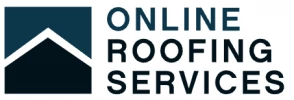Late updated: 30 Oct 2025 11:10
Written by: Oliver Bennett
Essential Roofing Maintenance Tools for UK Homeowners: A Comprehensive Guide
Maintaining a home's roof is crucial for UK homeowners, given the country's diverse and often challenging weather conditions. While professional services are indispensable for complex tasks, having the right tools for DIY maintenance can save money and prevent minor issues from becoming major problems. In equipping ourselves with essential roofing maintenance tools, we not only empower UK homeowners but also ensure the longevity and safety of our homes.
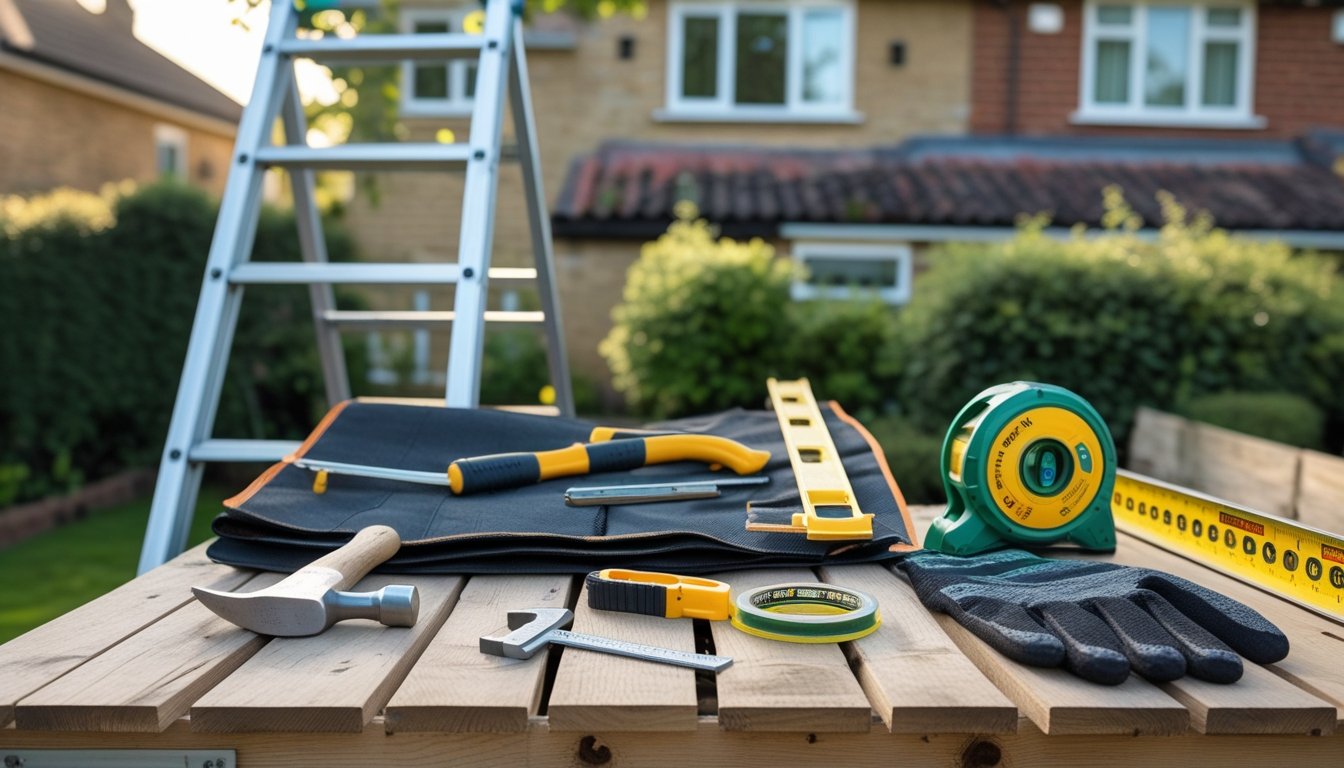
Roof work can be daunting, but it becomes much more manageable with the right set of tools. Basic equipment like ladders and gloves are necessary, but more specialised tools like slate cutters and roofing hammers make specific tasks much easier. Having these tools on hand allows us to perform regular inspections and small repairs before they evolve into costly headaches.
Navigating roof maintenance safely requires not only tools but also appropriate safety gear. Harnesses, stable ladders, and slip-resistant footwear are vital for safe roof access. With the right equipment, we can confidently tackle routine maintenance, safeguarding our roof against the elements.
Key Takeaways
- Essential tools simplify DIY roofing maintenance for UK homeowners
- Safety gear is crucial for conducting roof repairs confidently
- Regular maintenance can prevent major, costly repairs
Fundamental Roofing Maintenance Tools Every UK Homeowner Should Own
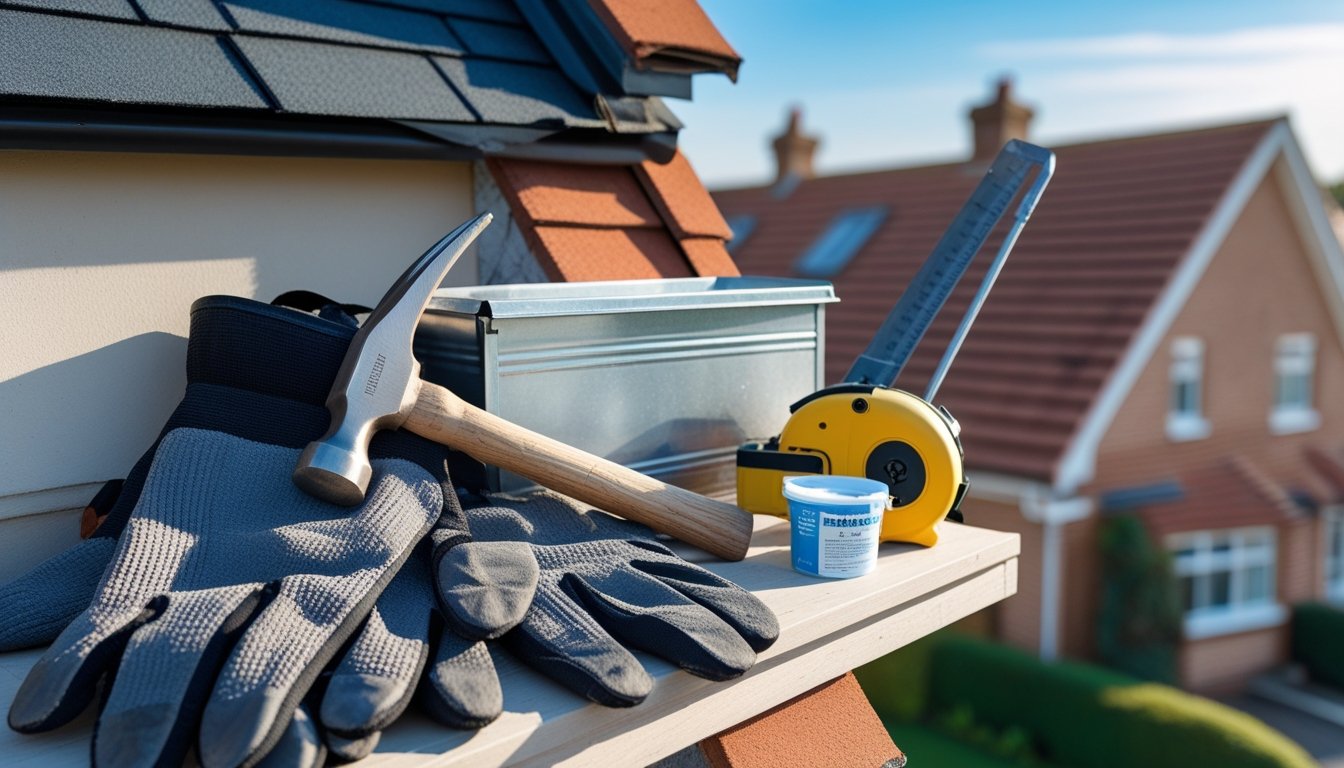
In the realm of roof maintenance, equipping ourselves with the appropriate tools can significantly ease the process and amplify safety. It's crucial to have both standard and specialised tools to manage repairs, measure accurately, and replace materials effectively.
Essential Hand Tools for Roof Repairs
A quality roofing hammer or hatchet is indispensable. These tools simplify driving nails and often include features for pulling out old nails. Similarly, a pry bar or nail puller aids in removing unwanted fasteners without damaging underlying materials.
Utility knives are important for precise cutting of roofing materials. They offer better control than larger knives, making them ideal for intricate tasks. Keeping spare blades close at hand ensures work continues smoothly without annoying interruptions.
Measuring and Layout Equipment for Accurate Work
Precise measurements are vital in roofing work to avoid costly mistakes. A tape measure or measuring tape is the first tool to consider. Opt for one with marked intervals for enhanced accuracy. A chalk line aids in creating straight lines, essential for laying down tiles or shingles in a uniform manner.
Speed squares are another must-have. These tools provide quick and precise measurements for angles, making them perfect for assessing the pitch of a roof or cutting materials at the correct angle. Their utility cannot be understated in achieving professional results.
Core Shingle Removal and Replacement Tools
For efficient shingle removal, a roofing shovel or shingle remover is invaluable. These tools are designed to lift shingles without unnecessary effort, reducing strain on our shoulders and back. Consider a model with a comfortable grip to enhance usability.
When replacing shingles, having replacement tools like a roofing hammer is essential to secure new shingles properly. Additionally, using matching nails helps maintain the integrity and durability of the roofing system. A combination of these core tools facilitates a seamless transition from old to new shingles, maintaining the roof's protection.
Safety Gear and Access Equipment for Roof Maintenance
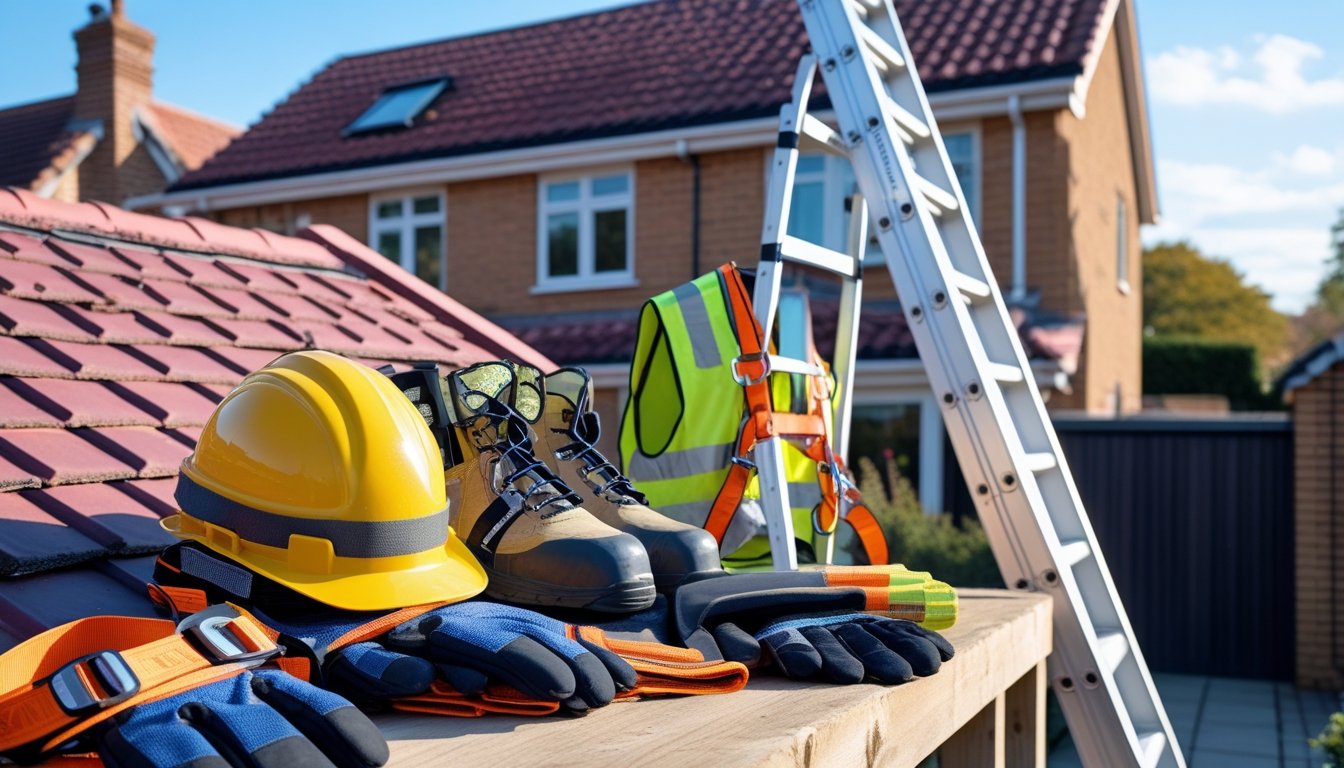
Ensuring safety when conducting roof maintenance is paramount. This involves using the appropriate personal protective gear, having safe access via ladders and stabilisers, wearing suitable footwear, and employing effective vision and fall-prevention solutions.
Personal Protective Equipment for DIY Roof Work
When engaging in DIY roofing tasks, Personal Protective Equipment (PPE) is a must to prevent accidents. We should wear safety helmets to protect against falling debris and safety glasses to shield our eyes from dust and particles. A safety harness is essential when working at height, as it prevents falls and secures us to a stable point. These items collectively provide a foundation of security, allowing us to work with confidence and reduced risk of injury.
Ladders, Stabilisers, and Safe Roof Access
The basic point of access to any roof is a sturdy ladder. Extension ladders, with their adjustable length, are versatile and suitable for various heights. To ensure stability, ladder stabilisers or levellers are crucial as they prevent wobbling and sliding. Additionally, positioning the ladder at the correct angle and securing it firmly on stable ground minimises accidents and enhances safety. By maintaining these standards, we optimise our safety when accessing roof areas.
Recommended Non-Slip Footwear for Roof Safety
Non-slip footwear, such as specific roofing boots or shoes with rugged soles, is vital for maintaining grip on various roof surfaces. These should feature durable materials that ensure both safety and comfort. The soles must offer excellent traction, reducing the risk of slipping on wet or uneven tiles. Investing in quality non-slip boots can prevent accidents, making us feel secure and confident while moving across the roof.
Vision and Fall-Prevention Solutions
To maintain clarity of vision, especially in harsh sunlight, tinted safety glasses or goggles are recommended. When combined with the use of a safety harness and fall-arrest systems, such as roof anchors and safety lines, we can significantly reduce the likelihood of falling injuries. These systems are designed to keep us securely tethered to a fixed point, ensuring we can perform roofing tasks safely and efficiently. By prioritising both vision and fall prevention, we maximise security and minimise risks during roof maintenance.
Frequently Asked Questions
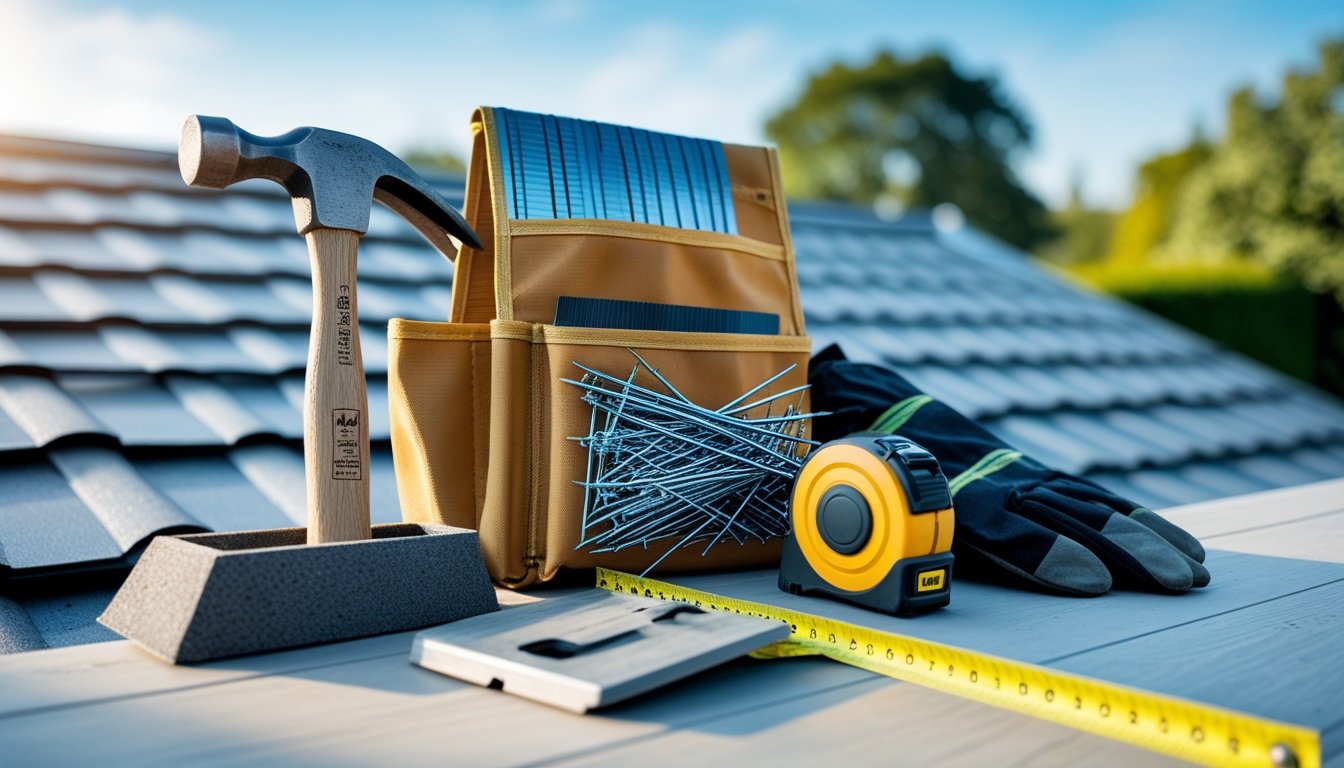
Roof maintenance in the UK often requires specific tools and materials due to the country's weather conditions and building regulations. It's important for homeowners to understand the essentials of DIY roof repair, safety equipment, and suitable materials.
What are the crucial tools needed for DIY roof repair in the UK?
For DIY roof repairs, a sturdy ladder, a roof ladder, roofing nails, a hammer, sealing adhesives, and a trowel are essential. Each tool serves a specific purpose, ensuring repairs can be carried out effectively and safely.
How often should British homeowners carry out roofing maintenance?
Regular maintenance is key to a roof's longevity. We recommend inspecting your roof at least twice annually, ideally in spring and autumn, to prevent seasonal damage and address any potential issues early.
Which materials are best suited for patching a UK home's roof?
For patching, high-quality asphalt shingles, roofing felt, or slate tiles are often best suited. These materials are durable and can withstand the varying weather conditions typical in the UK.
Can you list essential safety equipment for undertaking roofing work?
When conducting roof work, safety is paramount. Essential safety gear includes a sturdy harness, non-slip boots, safety gloves, and a helmet. This equipment helps prevent injuries during roofing tasks.
What is the most effective approach to cleaning gutters for UK properties?
Effective gutter cleaning involves removing debris manually or using a gutter-cleaning tool. Employing a hose to flush out finer dirt ensures the drainage system functions properly, preventing water damage.
What should be included in a basic roofing maintenance kit for UK homeowners?
A basic roofing maintenance kit should contain a hammer, roofing nails, sealant, patching materials, and a measuring tape. Having these on hand allows homeowners to address minor repairs without delay.
